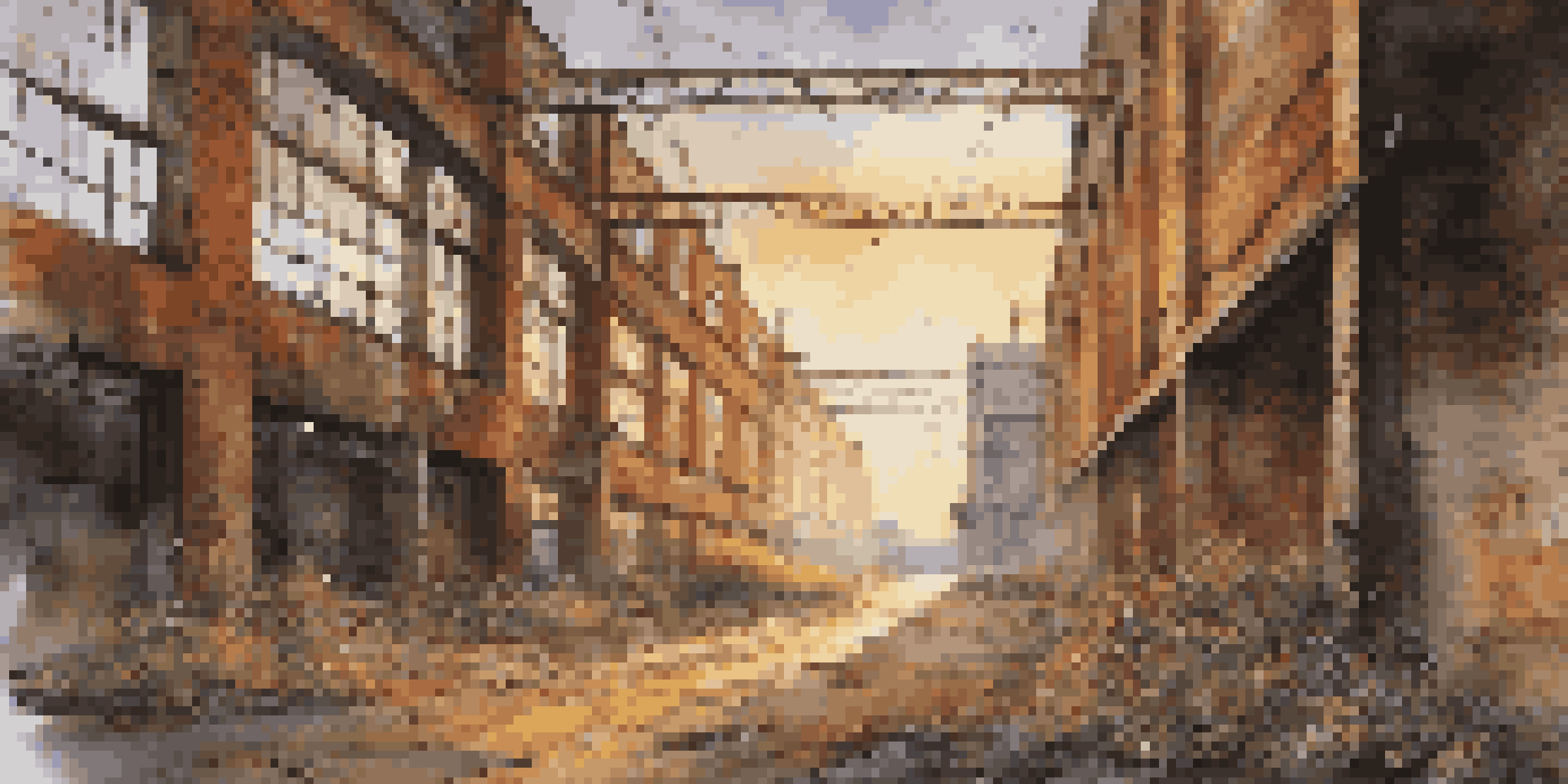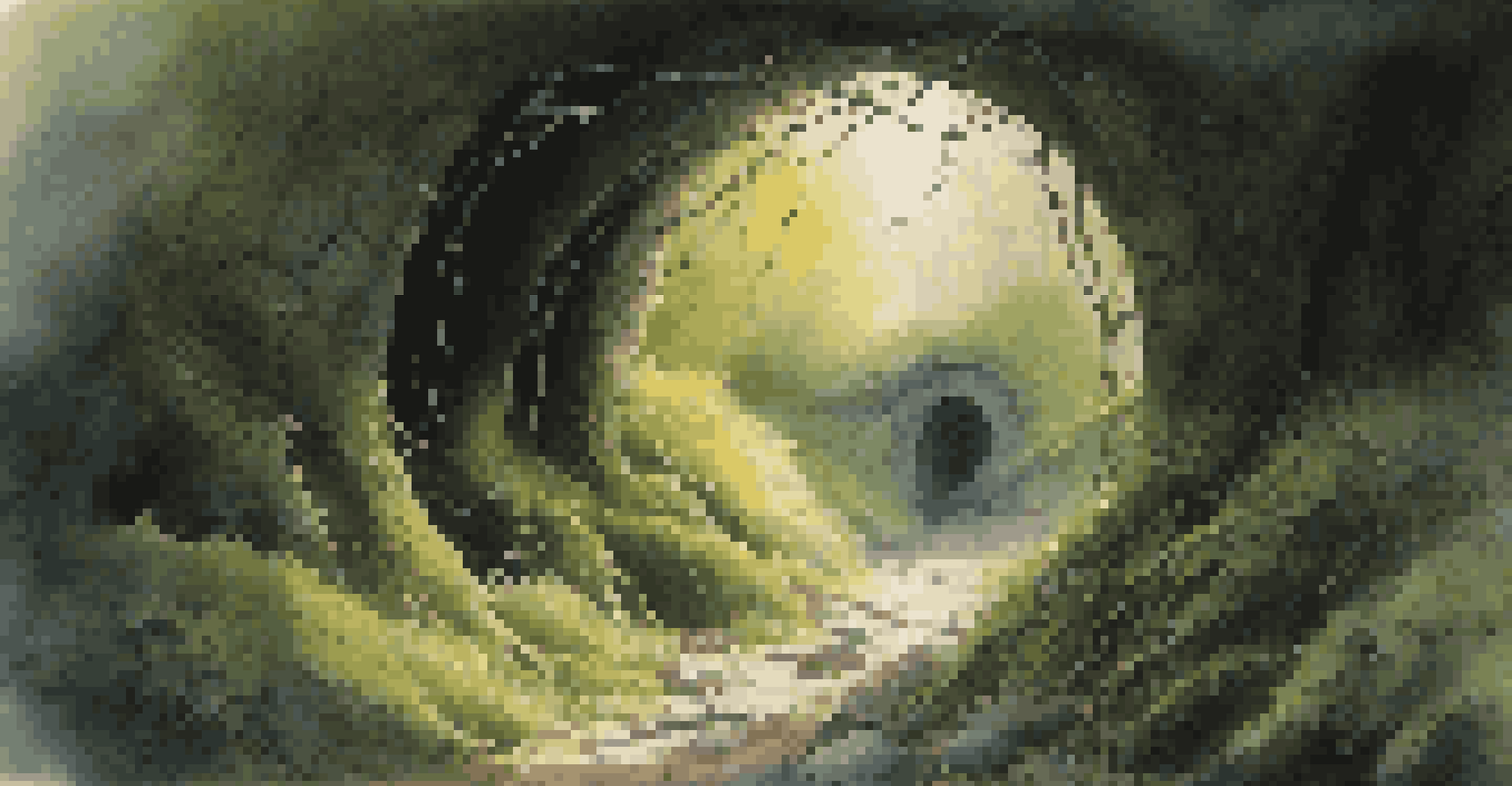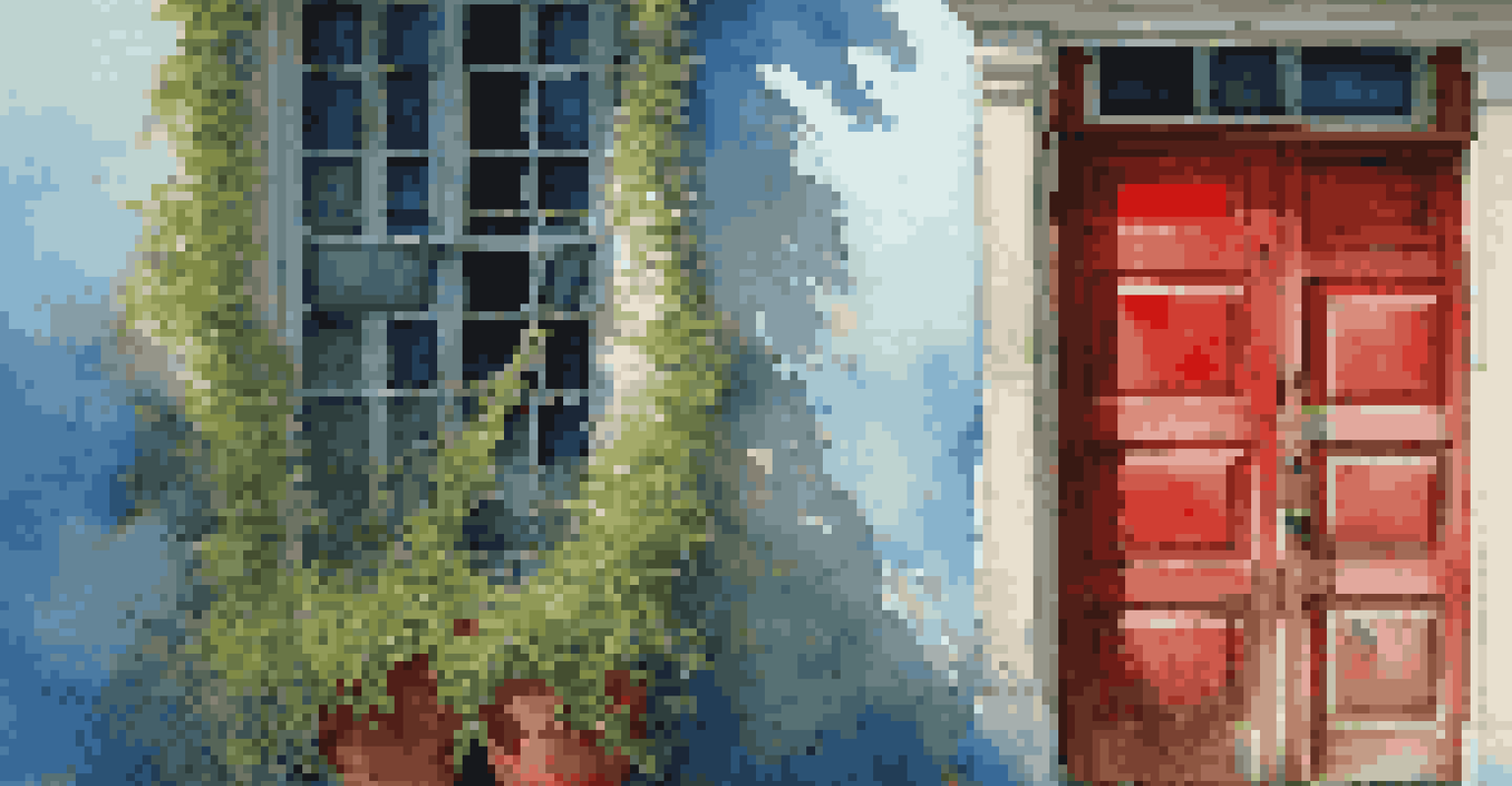Urban Exploration Photography: Composition and Framing Tips

Understanding Urban Exploration Photography Basics
Urban exploration photography, often referred to as urbex, captures the beauty of abandoned or overlooked spaces in cities. These locations can range from derelict factories to hidden tunnels, showcasing a side of urban life that many people never see. The allure of urbex lies not just in the places themselves, but also in the stories they tell through their decay and neglect.
Photography is the story I fail to put into words.
To get started in urban exploration photography, it's important to understand the legal and safety issues involved. Many sites may be off-limits, so always research and respect private properties. Equip yourself with the right gear, including a good camera, a sturdy tripod, and perhaps even a flashlight for darker areas, as safety should always be your top priority.
Once you've understood the basics, you're ready to delve into the artistic side of urban exploration photography, where composition and framing play crucial roles. A well-composed shot can transform a simple scene into a breathtaking image that captures the viewer's attention and imagination.
The Rule of Thirds in Urban Photography
One of the foundational principles of photography composition is the Rule of Thirds. Imagine dividing your frame into a grid of nine equal parts with two horizontal lines and two vertical lines. The idea is to position your subject along these lines or at their intersections, creating a more balanced and engaging photograph.

In urban exploration, applying the Rule of Thirds can help draw attention to specific elements in your frame, such as an interesting doorway or a weathered wall. This technique encourages the viewer’s eye to wander through the photograph, inviting them to explore the details. It’s particularly effective in urban settings where the architecture can serve as both foreground and background.
Explore Legal and Safety Issues
Before diving into urban exploration photography, always research the legal aspects and prioritize safety at abandoned sites.
While the Rule of Thirds is a great guideline, don’t be afraid to break it when the moment calls for it. Sometimes, a centered subject can create a powerful impact, especially in symmetrical compositions found in many urban environments. The key is to experiment and see what resonates best with your creative vision.
Leading Lines: Creating Depth and Perspective
Leading lines are another fantastic compositional tool that can guide the viewer’s eye through your photograph. These lines could be anything from the edges of a building, a winding path, or even shadows cast by structures. They create a sense of depth and perspective, making your urban photography feel more dynamic and immersive.
The best thing about a picture is that it never changes, even when the people in it do.
In urban exploration, look for natural leading lines that enhance your composition. For example, a series of rail tracks can lead the viewer’s eye toward a distant subject, creating a journey within the frame. This technique not only adds visual interest but also helps convey the scale and atmosphere of the environment.
When utilizing leading lines, consider the angle from which you shoot. A low angle can exaggerate the lines, making them appear more dramatic, while a higher angle can give a broader perspective. Play around with different viewpoints to discover how leading lines can transform your urban exploration shots.
Framing Your Subject with Environmental Elements
Framing is an effective technique used in photography to create a sense of context for your subject. By using elements within the environment, such as windows, doorways, or overhanging branches, you can create a natural frame that draws attention to your focal point. This technique enhances the composition and adds depth to your images.
In urban exploration, look for interesting structures or features that can act as frames. For instance, shooting through a broken window can add an intriguing layer to your photograph, emphasizing both the subject and the surrounding decay. It also creates a feeling of voyeurism, as if the viewer is peeking into another world.
Master Composition Techniques
Utilize techniques like the Rule of Thirds and leading lines to create visually engaging photographs that guide the viewer's eye.
When framing your subject, be mindful of the balance between the frame and the subject itself. An overly busy frame can distract from the main focus, while a well-chosen frame enhances it. Experiment with different elements to see how they can elevate your urban photography.
Using Light to Enhance Urban Exploration Shots
Lighting is one of the most crucial aspects of photography, and urban exploration is no exception. Natural light can dramatically change the mood and tone of your images, so pay close attention to the time of day you choose to shoot. The golden hour—shortly after sunrise or before sunset—offers soft, warm light that can beautifully illuminate urban environments.
In darker or more confined spaces, such as abandoned buildings, you may need to get creative with artificial light sources. Using a flashlight or a portable LED light can help you highlight specific areas and create striking contrasts. Just be cautious not to overdo it, as harsh lighting can wash out details and diminish the atmosphere.
Don’t shy away from experimenting with shadows and highlights, as they can add a dramatic flair to your urban photography. Consider how light interacts with the architecture, and use it to your advantage to create depth and intrigue within your compositions.
The Importance of Color in Urban Photography
Color can evoke emotions and set the tone for your photographs, making it an essential element in urban exploration photography. Whether you're capturing the vibrant hues of street art or the muted tones of decaying buildings, being mindful of color can significantly impact the final image. Consider how colors interact with each other in your composition to create harmony or tension.
In many urban environments, contrasting colors can draw attention to specific subjects. For example, a bright red door against a backdrop of peeling blue paint can create a striking focal point. Look for these moments of contrast and use them to guide your composition and storytelling.
Enhance Images with Post-Processing
Post-processing allows you to refine your urban exploration images, enhancing details and ensuring the final result aligns with your artistic vision.
Additionally, consider how the mood of the scene may change with different color palettes. A photograph dominated by cool tones can evoke feelings of loneliness or abandonment, while warm tones might convey warmth and nostalgia. Understanding the emotional weight of color can elevate your storytelling in urban exploration photography.
Post-Processing: Enhancing Your Urban Exploration Images
Post-processing is a crucial step in the photography workflow, especially for urban exploration images. While capturing great shots in-camera is important, editing can help enhance your vision and bring out details that might be overlooked. Tools like Adobe Lightroom and Photoshop allow you to adjust exposure, contrast, and color balance to create a polished final image.
When editing urban exploration photos, aim to maintain the authenticity of the scene. Over-editing can lead to unnatural-looking images that stray too far from reality. Instead, focus on enhancing the existing elements, such as making the colors pop or sharpening details that add to the overall atmosphere of the photograph.

Remember that editing is also an opportunity for artistic expression. Don’t hesitate to experiment with different styles, such as black and white or vintage filters, to see how they alter the mood of your images. Ultimately, post-processing should complement your vision and help tell the story of your urban exploration journey.